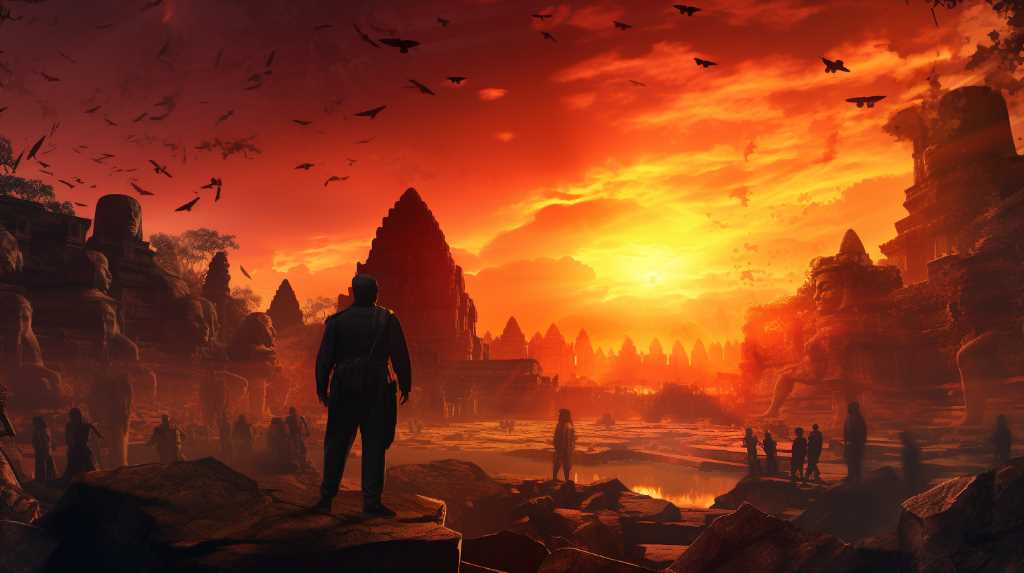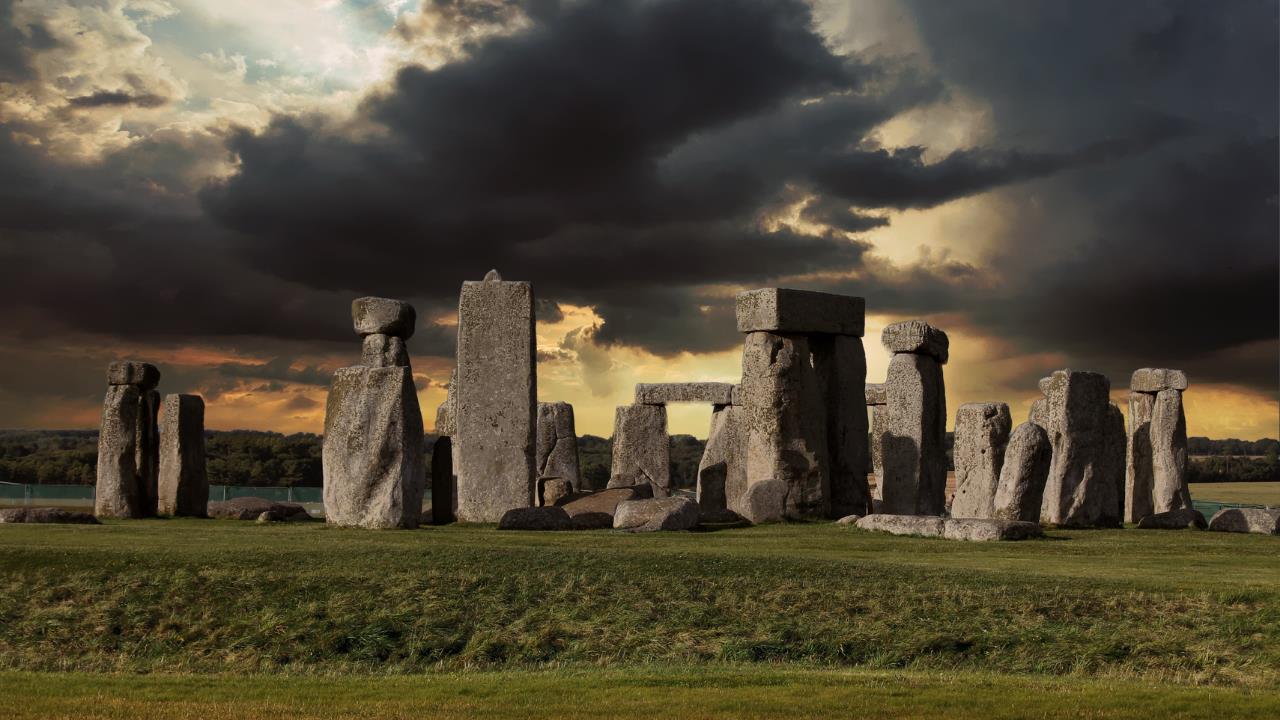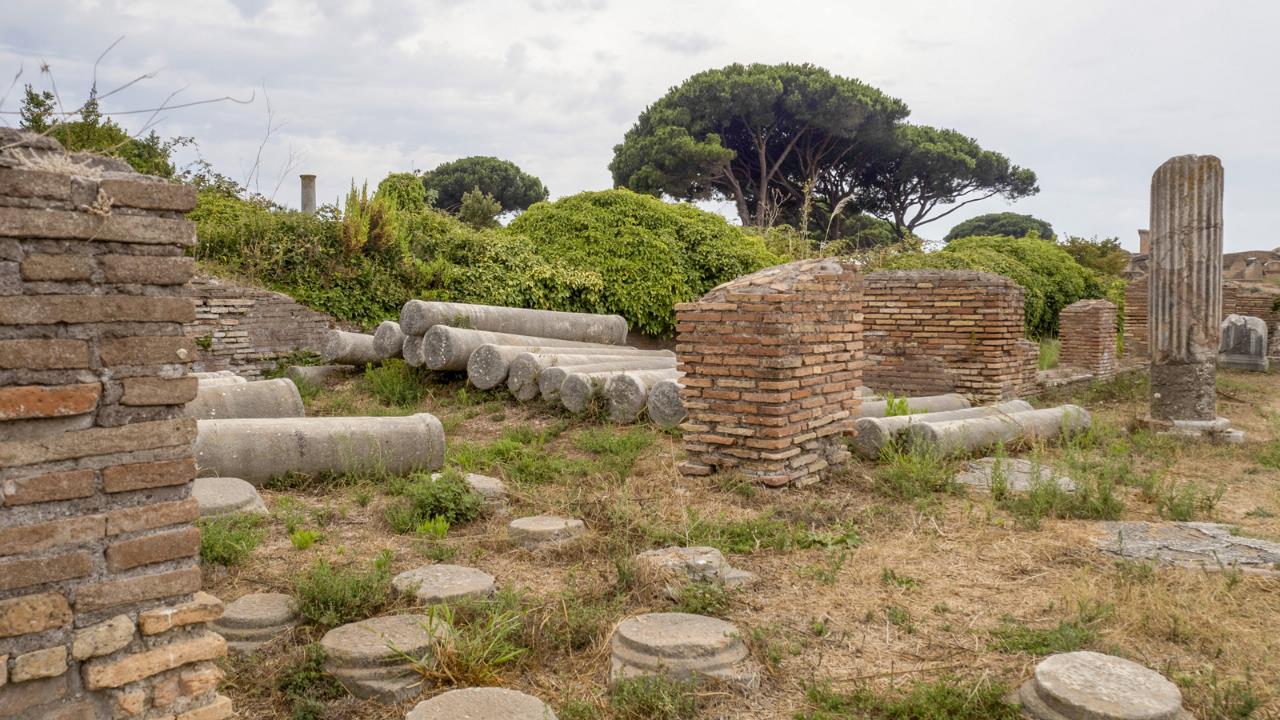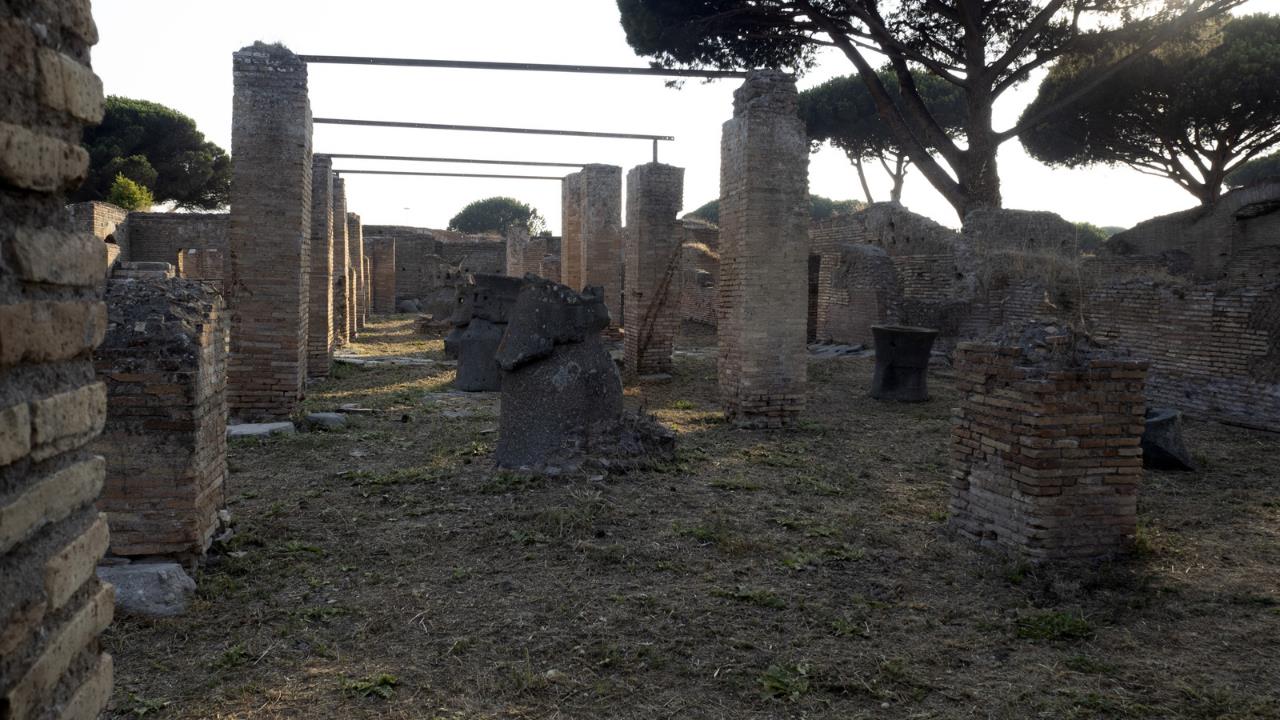
Unearthing Mysteries: Your Guide to Asia's Top 10 Ancient Archeological Wonders
You're about to embark on an incredible journey!
Uncover Asia's top ten archaeological marvels and delve into their rich histories.
From the majesty of the Great Wall to the hidden wonders of Angkor Wat, you'll explore ancient civilizations and their timeless legacies.
So, grab your explorer's hat, let's unravel the mysteries these treasures hold.
It's not just about sightseeing; it's about stepping into the past and touching history.
Ready? Let's get started!

Key Takeaways
- The Great Wall of China and the Terracotta Army showcase ancient China's strength, military acumen, and ingenuity.
- Angkor Wat and Petra are architectural marvels that symbolize national pride and continue to fascinate archaeologists.
- The Ajanta Caves and Borobudur Temple highlight the ingenuity and creativity of ancient creators in their intricate murals and sculptures.
- Sigiriya and Bagan Temples represent the fusion of different architectural styles and the decline of ancient cities due to historical events.
The Great Wall of China's Legacy
Beyond the reach of urban sprawl, you'll find the Great Wall of China, a testament to ancient ingenuity and a symbol of China's enduring strength. This monument, stretching over 13,000 miles, was erected by various dynasties over a period of 2,000 years, showcasing the ability of ancient civilizations to achieve astonishing architectural feats.
It's not just a wall; it's a complex defense system, encompassing watchtowers, barracks, and signaling capabilities. Its strategic design reflects the military acumen of its builders. However, it also reveals the harsh reality of feudal China, where countless laborers sacrificed their lives.
The Wall's legacy is twofold— a symbol of national resilience, but also a grim reminder of the human cost of monumental ambitions.
Secrets of the Terracotta Army
Just a few hundred miles from the Great Wall, you'll encounter another of China's ancient marvels, the Terracotta Army, providing a whole new level of insight into the country's rich historical tapestry.
Unearthed in 1974, these life-sized soldiers, crafted with exquisite detail, served as guardians for the first Emperor of China, Qin Shi Huang, in his afterlife. You'll be astounded by the scale - over 8,000 soldiers, 130 chariots, and 670 horses, each with unique features.
Yet, there's more beneath the surface. Recent analysis shows the warriors were realistically painted, suggesting advanced techniques for the period. Additionally, the site's layout mirrors the imperial capital, Xianyang, hinting at a deeper symbolism.
It's a silent testament to China's ancient ingenuity and prowess.

Marvels of Angkor Wat
Leaving China's terracotta warriors behind, your next stop on this journey through Asia's archeological treasures takes you to Cambodia's Angkor Wat, a masterpiece that's nothing short of breathtaking.
This sprawling temple complex, the largest religious monument in the world, showcases the sophistication of Khmer architecture at its peak. Built in the 12th century, it's a testament to the ingenuity of its creators, with intricate bas-relief carvings depicting Hindu mythology and celestial nymphs, or 'apsaras', gracing its stone walls.
The central sanctuary's quincunx of towers symbolize Mount Meru, the home of Hindu gods. Despite centuries of conflict and environmental wear, Angkor Wat remains a symbol of national pride, its image immortalized in Cambodia's national flag. Its mysteries continue to fascinate archaeologists and visitors alike.
Petra's Architectural Wonders
Let's turn our attention now to the architectural wonders of Petra.
You'll find that the building techniques used in this ancient city are unparalleled, showcasing the craftsmanship of a civilization long past.
The symbolism embedded in the designs, too, offers a fascinating glimpse into the beliefs and culture of those who built it.
Building Techniques Exploration
In your exploration of Petra's architectural wonders, you'll be astounded by the innovative building techniques used in ancient times. Despite the lack of modern tools and technologies, the Nabataeans, who carved this city out of rock, showcased remarkable engineering feats.

- Rock-Cutting Technique: They mastered the art of 'sculpting' buildings directly from cliffs, leaving rooms, temples, and tombs with intricate designs.
- Water Management System: They developed sophisticated water control methods, including dams, cisterns, and water conduits, demonstrating advanced understanding of hydraulics.
- Structural Engineering: Structures like Al Khazneh ('The Treasury') exhibit their expertise in creating imposing, yet stable, freestanding facades.
These techniques not only attest to their skills but also their deep understanding of their environment.
Petra's architecture is a testament to human ingenuity and resilience in the face of formidable natural challenges.
Symbolism in Design
Delve deeper into Petra's architectural marvels, and you'll uncover a wealth of symbolism intricately woven into their designs. The city's creators, the Nabateans, didn't just sculpt grand structures from red sandstone; they infused them with cultural meanings.
Take the iconic Al-Khazneh, or Treasury, for instance. Its facade is adorned with figures and patterns, each signifying something significant. The urn at the top, rumored to hide pharaoh's treasure, represents afterlife prosperity. The twin griffins standing guard symbolize protection and divine power. Even subtle elements, like the Corinthian capitals, reveal the Nabateans' exposure to Hellenistic influences.
As you explore Petra, you're not just witnessing an ancient city's grandeur - you're peering into a complex tapestry of symbols, each unraveling its own tale.
Ajanta Caves' Artistic Splendors
Peering into the Ajanta Caves, you'll be captivated by the artistic splendors etched into its ancient walls. These caves, nestled in the heart of India, are more than just hollowed-out rocks. They're a testament to the ingenuity and creativity of their ancient creators.
- Murals: The walls are adorned with murals that narrate Buddhist teachings using vivid colors. They're not just art, but visual scriptures.
- Sculptures: You'll find intricate sculptures chiseled from the very rock, depicting various stages of Buddha's life and his teachings.
- Architecture: The caves' design is deliberate, creating a sense of tranquility and reverence that only enhances their spiritual significance.
As you marvel at the Ajanta Caves' artistic splendors, you're preparing yourself for the next stop: the Borobudur Temple, a spiritual odyssey waiting to be explored.

Borobudur Temple: A Spiritual Odyssey
You'll discover a myriad of spiritual mysteries as you embark on your journey through the ancient Borobudur Temple. This colossal Buddhist monument in Indonesia is an architectural marvel, representing the blend of Javanese Buddhist architecture with Indian influence.
Radiating a profound spiritual aura, it's a maze of 2,672 relief panels and 504 Buddha statues. Every corner narrates the path to enlightenment, with its ten levels symbolizing the Buddhist cosmology.
You'll walk through galleries depicting the life of Buddha, allowing you to relive his teachings. The Borobudur isn't just a temple, it's a spiritual odyssey.
As you ascend towards the grand stupa at the summit, you're not only climbing towards the peak of a monument, you're ascending your own spiritual journey.
Climbing Sigiriya, The Lion Rock Fortress
Climbing to new heights in your archaeological exploration, you're next confronted with the impressive Sigiriya, known as the Lion Rock Fortress in Sri Lanka. This towering rock plateau, rising 200 meters above the jungle, is an unmistakable testament to the ingenuity of ancient civilizations.
Here's what makes Sigiriya unique:
- Frescoes: The fortress is adorned with vibrant frescoes, which are a rich source of information on the aesthetic sensibilities of the time.
- Mirror Wall: A polished wall used by ancient visitors for graffiti, it's a fascinating glimpse into the minds of past explorers.
- Gardens: Sigiriya's surrounding gardens, a blend of symmetry and wild growth, reflect an advanced understanding of landscape architecture.
A Second Look at the Terracotta Army
Continuing your journey through Asia's archaeological marvels, it's time to delve into the enduring mystery of China's Terracotta Army.

Discovered in 1974 in Xi'an, this remarkable legion of over 7,000 life-size soldiers, horses, and chariots is a testament to the grandeur of the Qin Dynasty. Each warrior, meticulously crafted and individually unique, was designed to accompany China's first emperor, Qin Shi Huang, into the afterlife.
You'd be intrigued to know recent investigations have hinted at possible Greek influence on the army's creation. This speculation, if proven true, would redefine our understanding of East-West interactions in ancient times.
Now, as we shift our gaze from China's elaborate burial customs, let's unravel the mystique surrounding Myanmar's Bagan temples in our next exploration.
The Bagan Temples' Mystique
Let's shift our focus to the mystique of the Bagan Temples, a sprawling city of temples in Myanmar.
You'll explore their historical context, a tapestry of early medieval politics and religion that shaped Southeast Asia.
Then, we'll dissect their architectural significance and techniques, looking at how these structures have withstood the test of time and what they tell us about the ingenuity of their creators.
Bagan Temples' Historical Context
Delving into the mystique of the Bagan Temples, you'll uncover a rich tapestry of history that's as fascinating as the temples themselves. Flourishing from the 9th to 13th centuries, Bagan was once the capital of the Pagan Empire, considered the first unified kingdom of Myanmar.

The Bagan Temples' golden era took place during the reign of King Anawrahta (1044-1077) who instigated mass temple construction throughout the region.
An estimated 4,000 temples were built during this period, reflecting a fusion of Mon and Indian styles.
Bagan's decline began in the late 13th century, due to repeated Mongol invasions.
Today, these temples stand as a testament to Bagan's illustrious past, offering you a glimpse into a civilization that once flourished in this corner of Asia.
Architectural Significance & Techniques
Peel back the layers of the Bagan Temples' mystique and you'll find a treasure trove of architectural significance and innovative building techniques. These temples showcase the mastery of the ancient Burmese, encapsulating their artistry, religious devotion, and architectural innovation. Each temple, with its unique design, echoes the aesthetic and spiritual values of the time.
The use of red bricks, a hallmark of Bagan architecture, wasn't merely aesthetic but also practical in withstanding earthquakes. Intricate carvings and detailed frescoes adorn the interior walls, demonstrating a sophisticated understanding of both art and narrative. The Bagan Temples aren't just a testament to ancient Burmese culture; they're an architectural marvel that continues to inspire.
As we venture further, let's unravel another mystery: the Ellora Caves.

Unveiling the Ellora Caves
While you may have marveled at many architectural wonders, nothing quite prepares you for the awe-inspiring grandeur of the Ellora Caves. These spectacular caves, hewn from the vertical face of the Charanandri Hills, are a testament to ancient Indian rock-cut architecture.
You'll find these features particularly captivating:
- Diversity of Faiths: The caves, numbering 34 in total, represent Hindu, Buddhist, and Jain traditions, demonstrating a spirit of religious harmony.
- Architectural Prowess: The Kailasa Temple, Cave 16, is the world's largest monolithic structure, carved top-down from a single rock.
- Artistic Brilliance: The intricate carvings and sculptures inside the caves depict various deities and mythological tales, showcasing the consummate skill of the artisans.
In essence, the Ellora Caves aren't just an archaeological wonder; they're a symbol of ancient India's pluralistic culture and architectural prowess.
Conclusion
So, there you have it! Asia's top ten archaeological wonders, each with its own unique charm and history, waiting for you to discover.
From the Great Wall's enduring legacy to the mystical allure of Bagan's temples, these sites offer not just visual treats, but a deep dive into ancient civilizations.
Remember, every stone has a story, and it's up to you to unravel it.
So, pack your bags and get ready to embark on a journey through time!

 Backyard GrillingWeekend WarriorsAdvice from DadBeard GroomingTV Shows for Guys4x4 Off-Road CarsMens FashionSports NewsAncient Archeology World NewsPrivacy PolicyTerms And Conditions
Backyard GrillingWeekend WarriorsAdvice from DadBeard GroomingTV Shows for Guys4x4 Off-Road CarsMens FashionSports NewsAncient Archeology World NewsPrivacy PolicyTerms And Conditions
